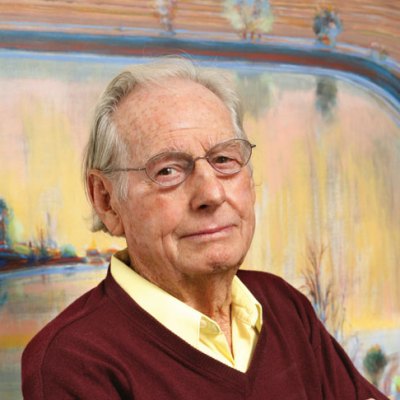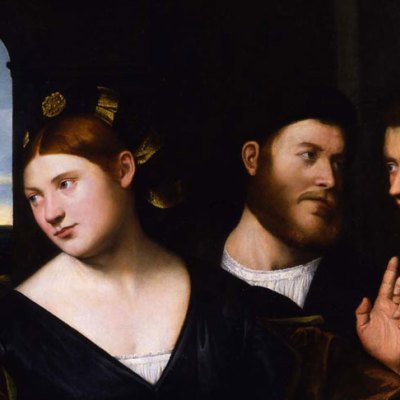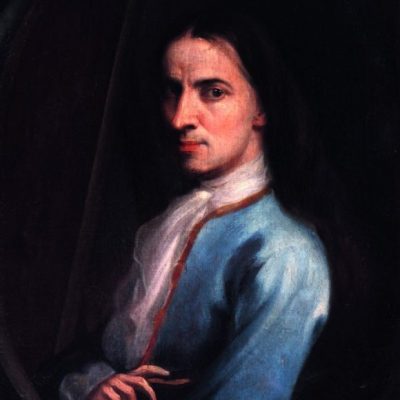For much of the 20th century, except for a brief period during the Second World War, few historians and art museums in the United States and Europe looked to Latin America – and when they did it was Pre-Columbian and modern art that they generally sought out. For those who looked at Latin American painting in the colonial period from the vantage point of Europe and the ‘Old Masters’ of the European canon, much of it appeared unschooled, derivative, naïve, and provincial – too similar to satisfy Old World desires for the exotic and the other; and insufficiently American for New World sensibilities. And the historical conditions that shaped artistic production were either unknown, or too foreign, to viewers schooled in a history and philosophy of art conceived in the spirit of Alberti, Vasari, and their critical heirs.
So, for many of a certain academic and museum-going vintage, two exhibitions of Mexican painting in US museums this year (both of which have been co-organised by the Fomento Cultural Banamex in Mexico), are particularly extraordinary and welcome developments. At the Metropolitan Museum of Art, ‘Cristóbal de Villalpando: Mexican Painter of the Baroque’ (until 15 October), features 11 paintings, the centrepiece of which is the monumental canvas, Moses and the Brazen Serpent and the Transfiguration of Jesus (1683), a work created for the Chapel of Christ at the Column in the Cathedral of Puebla, Mexico, from which it has never before been moved. And later this year the Los Angeles County Museum of Art will present a much larger survey of around 100 paintings – ‘Painted in Mexico, 1700–1790: Pinxit Mexici’ (19 November–18 March 2018) – which will then travel to the Met (24 April–22 July 2018).
Moses and the Brazen Serpent and the Transfiguration of Jesus (1683), Cristóbal de Villalpando. Photo: propriedad de la Nación Mexicana, Secretaria de Cultura, Dirección general de sitios y monumentos

These are not the first exhibitions at the Met, or the United States, to feature Mexican art of the viceregal period (1521–1821), when what we today know as Mexico formed part of the Viceroyalty of New Spain, one of the American possessions of the Crown of Castile. They do, however, indicate a noteworthy shift in historical and museological perspectives, incorporating viceregal Latin America into the mainstream of Western art and art history.
The mendicant missionaries who followed on the heels of the Spanish conquistadores, beginning in 1523, introduced Christian subject matter and the rudiments of Western style to the continent through European prints, book illustrations, and small-scale sculptures. These items served indigenous painters and sculptors as models for the artworks that they produced, often in indigenous materials, formats, and techniques, in monastic craft schools and workshops. The arrival of trained architects, painters, and sculptors from Europe, beginning in the 1540s, as well as larger-scale works of art imported from Seville and Antwerp, furthered the transfer of cultural influence from one side of the Spanish Atlantic to the other. In the process, the centre of artistic production shifted from the monastic workshops to those of professional artists organised in guilds.
The practices of the medieval guild system (then fading in much of Western Europe, but not in the Iberian Peninsula), combined with efforts to impose and maintain Catholic orthodoxy in the American colonies, narrowed the scope of art. Artists were not, as envisioned by Leon Battista Alberti in De Pictura, intellectuals engaged in a liberal art that had a theoretical, mathematical foundation; they were craftsmen who learned manual skills and practised mechanical arts – and would remain so until well into the viceregal period. Artistic training in Iberoamerica did not entail studying the art of classical antiquity – to which Americans had no direct physical access – or drawing from the human figure. Instead it required copying from one’s master, from the work of fellow artists, and from imported prints after the works of European artists. New Spanish and Peruvian painters would have had almost no opportunity to see the originals as the Spanish Crown’s American subjects in the viceroyalties of New Spain and El Perú were not allowed to travel to the metropolis without the express permission of the king. (The viceroyalty of El Perú was the major Spanish possession in what is today South America. Artistic developments there during the viceregal period, as elsewhere in Spanish America, followed similar but not exactly the same patterns.)
The Mass of St Gregory (1539), unknown artist. Photo: © RMN-Grand Palais/Benoît Touchard

The Church was the most important patron of the arts in pre-Independence Iberoamerica and, for most ecclesiastical patrons and commissions, the orthodoxy of the image and its message (and, at times the splendour of the materials used) was the measure of an artwork’s success and value – rather than the underlying geometry of the forms or the ideas and originality of the artist. The predominance of religious over secular subjects further distanced viceregal American production from modern Western experience and expectations. Moreover, the absence of royal courts and collections, and of a secular culture of collecting, heightened the sense that works of art had a function, rather than an essence that was independent of their role as commemorative and didactic objects of visual indoctrination.
The interpretation of images in the early modern Iberian world poses a particularly complex challenge to scholars and curators. Spanish and Portuguese ships, merchants, soldiers, missionaries, and colonists sailed from Europe to Africa to America to Asia and back, creating arguably the first global exchange of commerce and culture in human history. Viceregal America, where the ‘four continents’ came together, poses a further series of problems. Here after one generation, the colonist – as a result of being born on American soil – became the colonised. Yet, in theory (if not always in practice), they enjoyed prerogatives unavailable to the indigenous, African, Asian, and mixed-race subjects of the Spanish and Portuguese crowns.
The Agony in the Garden (c. 1610), Baltasar de Echave Orio. Photo: Museo Nacional de Arte/Instituto de Bellas Artes y Literatura

For many years, the Pinacoteca Virreinal de San Diego was the main public collection in Mexico City of painting from the viceregal period. Organised chronologically, the Pinacoteca’s galleries took the visitor through three centuries of painting in New Spain, beginning with the works of the European-born and -trained painters who introduced Western pictorial formats and media to the viceroyalty in the 16th century. In 2000, the Pinacoteca’s collection was incorporated into that of the Museo Nacional de Arte (MUNAL), where it is still hung chronologically, but forms part of a larger narrative about Mexican art. In the old Pinacoteca, the galleries dedicated to painters active after 1600, by which date European-born and -trained painters had for the most part stopped crossing the Atlantic – proved particularly surprising to first-time visitors from the United States and Europe. To encounter the legacies of Spain, Flanders (a Spanish possession), and Italy in the paintings of, for example, Balthasar de Echave Orio (c. 1558–1623), whose presence in Mexico was first documented in 1582, is not so remarkable. But, a generation ago, it seemed more surprising to see these influences in the art of the criollo (in this context, someone of European descent born in the Americas), and of indigenous and ‘mixed-race’ painters such as Echave Orio’s Mexican-born criollo grandson Baltasar de Echave Rioja (1632–82) and Juan Correa (c. 1646–1716), the son of a Spanish barber and surgeon and a freed black woman.
St Catherine of Alexandria (n.d.), Juan Correa. Museo Nacional de Arte, Mexico City

The Entombment of Christ (1665), Baltasar de Echave y Rioja. Museo Nacional de Arte, Mexico City

Many US museums have examples of viceregal art, but after a brief period of interest in Latin American art in the 1930s and ’40s, these were relegated mainly to storage until the Brooklyn Museum exhumed its holdings and put them on display in an exhibition called ‘Converging Cultures’ in 1996. Prior to this, viceregal art was either shown as part of blockbuster loan exhibitions, such as the Met’s ‘Mexico: Splendors of Thirty Centuries’ in 1990, or in Texas, the southwest, and California – regions which were part of Mexico until 1836 and 1848 – it was incorporated into museum collections as folk art.
Both ‘Converging Cultures’ and an exhibition in LACMA in 2011, called ‘Contested Visions’ addressed the interaction between indigenous and imported artistic forms, materials, styles, and functions, but from different perspectives – as their respective titles suggest. One’s vantage point determines what one sees, of course, and an artwork from the viceroyalty of New Spain or El Perú will appear to be one thing to the viewer versed in Pre-Columbian art of the Americas, and another to one conversant with that of Renaissance and baroque Europe. For many, works of art from viceregal Iberoamerica appear to be both at one remove from a source or tradition – European, indigenous American, African, Asian – and in the process of becoming something different and new, perhaps American.
There is a danger, of course, that the Villalpando and ‘Painted in Mexico’ exhibitions, (together with recent European surveys, at the Louvre in 2010 and at the Prado in 2013) might seem to imply a European perspective, highlighting forms of influence and interconnectedness that were previously deemed problematic. So what new interpretative models, if any, might these shows in the United States propose to the museum visitor?
Cristóbal de Villalpando (c. 1649–1714) is considered by many to have been the foremost painter in late 17th-century New Spain, the period in which a distinctive baroque style developed there and painters began to think of themselves as more than workmen. He received major commissions from the leading ecclesiastical patrons and produced mural-scale canvases for the most important churches of New Spain – the cathedrals of Mexico City and Puebla. Villalpando was also the New Spanish painter who most thoroughly absorbed the lessons of Rubens, whose work he knew through prints.
Juan Rodríguez Juárez (1675–1728) and his brother Nicolás, also a painter, were the sons, grandsons, and great-grandsons of painters. Juan Rodríguez Juárez received major commissions for New Spain’s greatest church, the Catedral Metropolitana in Mexico City, as had Villalpando before him. In 1719–20, Rodríguez Juárez produced two monumental paintings for the cathedral’s new central altarpiece, the Altar de los Reyes, designed by the Spanish altar and stage designer Jerónimo de Balbás: an Adoration of the Magi and an Assumption of the Virgin. In the former, Rodríguez Juárez included a self-portrait – in which he gazes out directly at the viewer – just as Villalpando had done in The Triumph of the Archangel Michael (c. 1685), one of the four monumental canvases that he painted for the cathedral’s sacristy.
Self-Portrait (detail; 1719), Juan Rodriguez Juárez. Photo: © D. R. Museo Nacional de Arte/Instituto de Bellas Artes y Literatura

Painting a self-portrait as an independent canvas elevates an artist in a sense, making him the equal of his patrons – in New Spain the great and the good of church, state, and society – who commission portraits from him. When an artist paints a self-portrait and inserts it into a key scene in sacred history, it suggests a certain self-confidence and awareness of his achievement and worth as an individual and, more to the point, as an artist. While artists’ portraits and self-portraits are very common in the Western European tradition from the Renaissance onward, they were not at all so in viceregal Iberoamerica; at least, not before artists began to think very differently about themselves and their profession, actively seeking to transform painting from a mechanical to a liberal art. In choosing to represent themselves, Cristóbal de Villalpando and, more insistently, Juan Rodríguez Juárez portrayed a new sensibility.
In 1786, the painter Rafael Gutiérrez donated a group of paintings to a newly founded institution, the Real Academia de Bellas Artes de San Carlos in Mexico City. This was the first academy of art in the Americas, something that previous generations of painters, most notably Miguel Cabrera (1695–1768), had tried and failed to establish in the viceroyalty. More than two centuries after the introduction of European artistic traditions to the Americas – and almost a century after New Spanish artists such as Villalpando and Rodríguez Juárez had begun to advocate for the nobility of their art – an academic system that had developed in tandem with Italian Renaissance redefinitions of the nature of art and the artist was taking root in New Spain. Gutiérrez himself served as a lieutenant professor and corrector of drawing at the academy and among the paintings he presented to the fledgling institution, to serve as an inspiration and a model to its pupils, was Rodríguez Juárez’s Self-Portrait (c. 1719).
Saint Charles Borromeo and the Allegory of the Arts (1782), attributed to Rafael Gutiérrez. Museo Nacional del Virreinato, Tepotzotlán

Gutiérrez’s painting Saint Charles Borromeo and the Allegory of the Arts (1782) was created for an awards ceremony at the academy. It depicts the patron saint of the institution, a key figure for Counter-Reformation orthodoxy in art, but places him next to classical female allegories of architecture, painting, and sculpture and, in the upper left, the crowned American child whom they will instruct. In this work American – that is Mexican – practice is becoming art, and art is becoming Mexican.
Artists such as Villalpando, Rodríguez Juárez, and Gutiérrez sought to be recognised as New Spanish – i.e. Mexican – artists on their own terms. The exhibitions at the Met and LACMA amply justify their claims. The art historians, curators, and museums responsible for these and similar exhibitions and catalogues offer viewers and readers an opportunity to think about the history of art and artists in new ways. Most importantly of all, they allow an exceptional collection of painters and paintings to make their own case, brushstroke by brushstroke, on the walls of institutions from which they have for too long been inexcusably absent.
‘Cristóbal de Villalpando’ is at the Metropolitan Museum of Art, New York, from 25 July–15 October.
‘Painted in Mexico, 1700–1790: Pinxit Mexici’ is at the Los Angeles Country Museum of Art, Los Angeles, from 19 November–18 March 2018.
From the September 2017 issue of Apollo. Preview and subscribe here.


